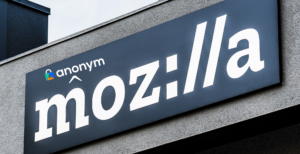The ad industry’s transition from third-party to first-party data infrastructure is the most significant change in digital history. Companies across the ecosystem need to invest in transformation to evolve and retool their business, infrastructure and capabilities.
There are two paths to transformation. Both rely on the corporate accounting definition of the word: making a one-time, nonrecurring investment in the business.
The first option is acquiring smaller companies built for the purpose of using first-party data, allowing the acquirer to leapfrog into position for the new era. The nonrecurring investment in this instance is related to the post-merger work of integrating the team and new assets put into the business.
The other option is less widely discussed, but is perhaps more appealing to some entities: making a one-time, nonrecurring investment focused on retooling, restructuring or rebuilding their technology to support the new first-party data reality. While this path may be lesser known, it could make a massive difference in most ad companies’ futures and value.
The fine print
In corporate accounting, a transformation, or new or discontinued operation, is a one-time investment producing a transformational outcome for a company’s organization, infrastructure and/or product while contributing to revenue and tax benefits for the organization. This could be direct fixes to many of the problems listed above, including removing and replacing outdated legacy systems with updated technology and systems.
Even if these projects have not been previously budgeted, management can make a compelling case for them and implement them quickly due to the strategic importance to the company.
To dive even deeper into accountant speak, a nonrecurring item is a gain or loss found on a company’s income statement that is not expected to occur regularly. That includes litigation fees, write-offs of bad debt or worthless assets, employee separation costs, and repair costs for damage caused by natural disasters. If the nonrecurring item has a significant effect on the company’s finances, it is listed as net of tax on a separate line below net income from continuing operations.
The need for transformation
So what qualifies as a transformation? The transition from the third-party data, cookie-reliant ecosystem to one built around first-party data provides a lot of different ways that brands, publishers, platforms or agencies can pursue this path.
Incorporating first-party data capabilities requires assets and teams with direct knowledge and capabilities so companies involved in the advertising ecosystem can activate, enrich and measure first-party data. Many companies looking at the future are weighing one of three options for adding tech and teams: build, buy or license.
For those pondering the acquisition route, the issue is there are no end-to-end solutions in market that currently perform all of those functions. Clean rooms are designed for data collaboration, but most have minimal capabilities in activation and measurement. Alternative ID providers can convert first-party IDs to alt IDs for activation, but they are still missing measurement and optimization functionality. Customer data platforms (CDP) are the closest to having the pipes and capabilities needed, but none are connected to clean rooms or alternative IDs.
Going the acquisition route would necessitate purchasing a CDP, data clean room, alternative ID and content marketing platform, then stringing them together into a comprehensive end-to-end solution. Any entity that acquires all these parts is going to face a major challenge integrating the teams and technology into its current business.
The M&A approach still requires transformation because the business has to pivot its direction. The transition from third-party to first-party data will require upskilling teams, updating privacy policies and legal contracts, terms and conditions and policies, along with updating operational workflows and technology.
That’s the buy route and the M&A mode of transformation. For those looking to take advantage of the one-time cost accounting trick, transformation instead pursues the build or license approaches. In this case, a brand, publisher, platform or agency would need to build out all the tech assets named above. This is so cost-prohibitive it’s almost impossible.
Licensing is the route many will take. This is where they can make a one-time, nonrecurring investment. Just as in the buy route, these companies will need to assemble the requisite technologies to remain operational in the first-party data world. The difference here is they’ll make licensing payments rather than acquisitions.
Moving forward
Many conversations across advertising this year will be about how businesses must change out of necessity or risk getting left behind. Rather than try to purchase your way into the future, organizations need to explore transformation from an accounting sense.
By investing in a one-time transformation project, businesses can add back the expense of the project to EBITA, increasing the valuation and future-proofing the business without the major engineering lift of incorporating technology from an acquisition.
This is a rare opportunity to solve an organization’s largest business challenges around product, tech, organizational inefficiencies and infrastructure, resulting in significant ROI and aligned organizational goals.
“Data-Driven Thinking” is written by members of the media community and contains fresh ideas on the digital revolution in media.
Follow MadTech and AdExchanger on LinkedIn.
For more articles featuring Bob Walczak, click here.
















